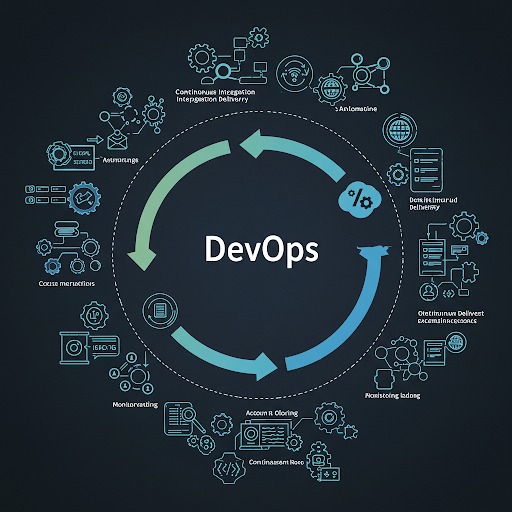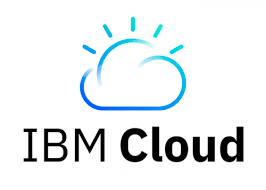DevOps
DevOps is a cultural and technical movement aimed at unifying software development (Dev) and IT operations (Ops). It focuses on improving collaboration, communication, and integration between development and operations teams to automate and streamline the process of software delivery and infrastructure management. In essence, DevOps encourages a more collaborative, efficient, and faster approach to developing, testing, deploying, and maintaining software. The goal is to break down silos, reduce manual work, and create a continuous flow of software delivery with high-quality standards.

Why Choose Our Cloud Solutions?
We modernize infrastructure, streamline outdated processes, and optimize cloud assets to build future-ready ecosystems.
Technology We Use

AWS

IBM Cloud

Google Cloud

Microsoft Azure
DevOps Lifecycle
The DevOps lifecycle describes the flow of activities that occur from the initial development of software to its final deployment and ongoing maintenance.
Plan
This is where the development process begins. It involves planning the features, setting goals, and determining the scope of the project. In DevOps, planning is often done collaboratively across teams.
Develop
Development involves writing the code, implementing features, and ensuring that they adhere to best practices for maintainability and scalability.
Build
This phase involves compiling the code, performing unit tests, and preparing the application for deployment. Automation tools are used to trigger builds when new code is pushed to the repository.
Test
In DevOps, automated testing is used to ensure the software meets quality standards before it is deployed. Types of tests include unit testing, integration testing, system testing, and performance testing.
Release
After successful testing, the application is ready for release. DevOps practices automate the release process, reducing the time it takes to push updates to users.
Operate
After deployment, DevOps teams focus on maintaining the application’s availability, performance, and scalability. This involves managing infrastructure, databases, and servers, often using cloud-based services.
Benefits of DevOps
Faster Time to Market
By automating the software delivery process and fostering collaboration, DevOps accelerates development cycles, enabling faster delivery of features and bug fixes.
Improved Collaboration
DevOps breaks down barriers between development and operations teams, improving communication and collaboration, which leads to more efficient workflows and better quality code.
Increased Deployment Frequency
Continuous integration and delivery allow organizations to deploy frequently, enabling them to quickly release updates, security patches, and new features.
Enhanced Quality and Stability
Automated testing, code reviews, and continuous monitoring lead to fewer bugs and higher-quality software. DevOps practices ensure that issues are caught early in the development process.
Scalability and Flexibility
DevOps practices often involve using cloud platforms and containers, which allow organizations to scale their applications and infrastructure dynamically in response to demand.
Reduced Costs
Automation reduces manual work and errors, leading to cost savings. Additionally, DevOps helps optimize infrastructure use and reduce downtime, further lowering operational costs.
Key Tools in the DevOps Ecosystem
Version Control
Git A distributed version control system widely used for tracking changes in source code during software development.
Continuous Integration/Continuous Delivery
Jenkins A popular open-source automation server for automating tasks related to building, testing, and deploying code.
Configuration Management
Ansible, Puppet, Chef: Tools for automating the management of infrastructure and application configuration.
Containerization
Docker A platform used for developing, shipping, and running applications inside containers, ensuring consistency across environments.
Monitoring and Logging
Prometheus An open-source monitoring and alerting toolkit. Grafana An open-source platform for visualizing metrics and logs.
Infrastructure as Code (IaC)
Terraform A tool for defining infrastructure as code, enabling the automated provisioning of resources across cloud platforms.
Core Principles of DevOps
Collaboration
The collaboration extends to other stakeholders such as security teams, ensuring everyone is aligned on building, deploying, and maintaining the system.
Automation
One of the foundational principles of DevOps is the automation of repetitive tasks, such as testing, deployment, configuration management, and monitoring.
Continuous Integration (CI)
Continuous Integration involves automatically integrating code changes from multiple contributors into a shared codebase several times a day.
Continuous Delivery (CD)
Continuous Delivery extends CI by automating the delivery of code to a production-like environment. Once code passes testing and validation, it can be deployed with minimal manual intervention.
Monitoring and Feedback
Continuous monitoring of applications in production is crucial to detect problems early and provide real-time feedback to development and operations teams.
Conclusion
DevOps is not just about tools; it’s a cultural transformation that brings together development and operations to improve the efficiency, speed, and quality of software delivery. By embracing DevOps principles and practices, organizations can release software faster, reduce errors, and create a more collaborative work environment. While the transition to DevOps may present challenges, the benefits it offers in terms of agility, stability, and customer satisfaction are significant.
